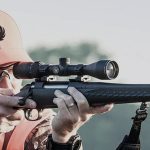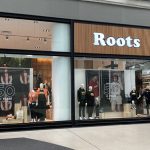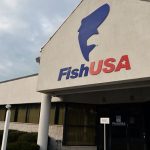Adidas Group saw declines in all segments of its business with the exception of TaylorMade-adidas Golf in the second quarter, but the increase in TMaG saw its improvement due to the inclusion of the Ashworth business this year. In sharp contrast to last year, the company saw foreign currency exchange as its friend this year as reported revenues declined just 2.5% versus the 8% decrease in currency-neutral terms. Last year at this time, Adidas Group, like other European companies, was realizing the benefits of the stronger euro currency.
The Reebok business continues to be the biggest drag on the top and bottom line, but the Group also saw the Adidas brand take a hit in Q2 as it struggled to anniversary stronger sales in the year-ago period linked to the Euro 2008 Championship. Still, owned-retail played a bigger role for both segments of the Group business and wholesale revenues declined even more sharply for the period.
Herbert Hainer, CEO and Chairman of the Adidas Group, suggested on a conference call with analysts that the good news was that the company did not see any fundamental deterioration in the business since the first quarter. He said the company’s financials for the first half of 2009 are exactly in line with the guidance they provided in May if not a little better. “I believe we have seen the bottom in our financial performance this year,” said Hainer.
Adidas Group revenues are expected to decline at a low- to mid single-digit rate on a currency-neutral basis for the full year, which would be an improvement from the 7% currency-neutral decline for the first half. The Group is projecting a low- to mid-single-digit sales decline on a currency-neutral basis for the Adidas brand in 2009. Reebok segment sales are now expected to decline at a low- to mid-single-digit rate on a currency-neutral basis in 2009 compared to the prior year. Currency-neutral sales at TaylorMade-adidas Golf are forecast to increase at a low-single-digit rate, driven by the consolidation of Ashworth for the full twelve-month period.
Though Adidas for the most part reports only first half results-not often detailing into second quarter-specific numbers-Q2 results can be calculated from a comparison between H1 and Q1 reported figures.
The results presented here focus largely on implied second quarter numbers and not figures actually reported by Adidas. All numbers in the accompanying charts, however, were supplied by Adidas AG.
Group revenues decreased 3% in euro terms to €2.46 billion ($3.35 bn) in the second quarter of 2009 from €2.52 billion ($3.94 bn) in the year-ago period. Group gross margin decreased 5.1 percentage points to 45.0% in the second quarter from 50.1% of sales in Q2 last year as a result of “higher input costs, currency devaluation effects-in particular related to the Russian ruble-as well as a highly promotional retail environment.”
Net income decreased 93% to €8 million ($11 mm) versus €117 million ($183 mm) in Q2 2008 mainly due to the Group’s lower operating profit, which fell 66% in euro terms, but the company also got hit by a higher tax rate that approached 67% in the first half from 31.5% in H1 last year, mainly due to a less favorable regional earnings mix. Diluted earnings per share for Q2 declined 90% to €0.06 (8 cents).
At Brand adidas, total sales in euro terms increased 3.8% to €1.75 billion ($2.38 bn) in the second quarter of 2009 from €1.82 billion ($2.84 bn) in Q2 2008, but fell 9% when accounting for the FX rate impact from the weaker euro against other currencies.
Owned-retail offset some of the decline in the wholesale business, growing nearly 15% for the period to €402 million ($548 mm) from €350 million ($547 mm) in the year-ago period. The owned-retail increase was again driven by double-digit comparable store sales increases as well as the addition of new stores. For the second quarter, owned-retail accounted for 23% of brand sales, compared to 17% last year.
Brand Adidas revenues would have declined 8.2% in euro terms excluding the owned-retail business.
The Sport Performance category represented roughly 79% of total brand Adidas sales in Q2 versus 82% in the year-ago period, due to the stronger football (soccer) sales last year. For the first half, the decrease in football (soccer) was offset in part by growth in the outdoor category. Sport Performance sales decreased 7.5% to €1.38 billion ($1.88 bn), compared to €1.49 billion ($2.33 bn) in the year-ago period.
Reflecting the overall move in the market to fashion and lifestyle product, Adidas Sport Style revenues jumped nearly 19% for the quarter to €380 million ($518 mm) compared to €320 million ($500 mm) in Q2 last year. The company said the increase was driven by “strong momentum in the recently-released Style Essentials collection,” as well as gains in all other Sport Style categories. First half currency-neutral Sport Style sales increased 13% versus 2008.
Brand Adidas sales were down 13% in Europe to €803 mm billion ($1.09 bn). In North America, Brand Adidas sales jumped 15% in euro terms to €280 million ($381 mm), but were flat in U.S. dollar terms. Asia/Pacific sales were down less than 1% in euro terms in Q2 to €489 million ($666 mm). Latin America posted another solid double-digit gain for the brand, growing 13% for Q2 in euro terms to €170 million ($232 mm).
Brand Adidas gross margin declined 190 basis points to 46.4% of sales from 48.3% for the year-ago quarter. Management pointed to “higher input costs, currency devaluation effects, in particular related to the Russian ruble, as well as a highly promotional retail environment.”
Operating profit for brand Adidas, however, improved 7% to €188 million ($256 mm) from €175 million ($274 mm) in the prior year quarter on the year-ago costs related to UEFA EURO 2008 and the Beijing Olympics.
The company is maintaining its guidance for brand Adidas for the full year, estimating currency-neutral sales growth in low- to mid-single-digits for the year. Growth in Sport Style is not expected to offset declines in Sport Performance.
Reebok Still the Drag on Overall Group Numbers; Management Sees Some Light
Reebok segment revenues decreased 4.3% when measured in euro terms and fell nearly 17% when measured in U.S. dollars.
Sales in North America fell 15% to $279 million (€205 mm) when measured in U.S. dollars, but declined 2.8% in euro terms. Europe sales fell 11% in euro terms to €131 million ($178 mm) from €147 million ($230 mm) last year. Latin America sales improved 4% in euro terms to €54 million ($74 mm) from €52 million ($81 mm) last year, but declined 9.5% when measured in U.S. dollars. Asia revenues were again flat in euro at €59 million ($80 mm), but fell nearly 13% when measured in U.S. dollars.
Owned-retail revenues partly offset the sharper declines in the wholesale business, with retail posting a 14% increase for the quarter in euro terms. In U.S. dollar terms, owned-retail was actually flat at $142 million (€104 mm), reflecting a mid-single-digit decline in comparable store sales for the first half offset by new store growth in Russia. Owned-retail represented 23% of total Reebok segment sales in the quarter, compared to 19% of segment sales in the year-ago period.
Excluding owned-retail, Reebok segment sales were down 21% in U.S. dollar terms to $470 million (€345 mm), and declined 9% in euro terms.
Reebok brand sales fell 16.5% in U.S. dollar to $477 million (€350 mm) for the quarter from $571 million (€365 mm) in the year-ago period. Revenues declined 4% in euro terms. Reebok brand sales decreased 7% in H1 on a currency-neutral basis, with double-digit growth in the women’s footwear and walking categories more than offsetting declines in “most other categories.”
Management said that, while footwear volumes are down for the year, they said their “clean-up effort” has led to a double-digit increase in average footwear selling prices, with the highest increase in North America.
The women's Training business was said to be up almost 50%, and the women's Lifestyle sales have shown “signs of stabilization.” In Asia, sales were said to be heavily impacted by a store rationalization initiative in China. The men's and women's Sport revenues were up 10% in the first half. EasyTone has reportedly sold through a double-digit rate in all regions and key accounts since the launch.
Rockport brand revenues decreased 14% in U.S. dollar terms to $75 million (€55 mm) for the quarter versus $88 million (€56 mm) in the year-ago period. For the first half, Rockport currency-neutral sales declined 6% on top of a 9% decline in H1 last year, reflecting declines in North America, particularly at U.S. department stores, offset in part by growth in Europe.
Reebok-CCM Hockey, which includes the RBK, CCM, JOFA, and KOHO brands, reversed course in Q2, falling 21% in U.S. dollar terms to $60 million (€44 mm) in the second quarter from $75 million (€48 mm) in Q2 last year when the division had grown 21% versus the prior year. First half currency-neutral sales declined 3%, primarily due to “lower licensed sales.”
Reebok segment gross margins fell 820 basis points for the period to 33.0% of sales in Q2, compared to 41.2% of sales in Q2 last year. Management said “around half” of the decline was due to higher sourcing costs and the Russian ruble, with the remainder due to clearance activities, primarily in China, Spain, and the U.S.
Management is now forecasting full year sales for the Reebok segment sales to decline in low to mid-single-digits, a decline compared to the company’s previously “stable” forecast. Management said this is mainly due to the slower growth in emerging markets than originally planned, primarily impacted by the rationalization of the business in China, and the lower than expected growth area in Latin America.
TaylorMade-adidas Golf Gets Q2 Lift from Ashworth Acquisition
For the second quarter, net sales for the TaylorMade-adidas Golf business declined 2% in U.S. dollar terms to $347 mm (€255 million) from $353 mm (€226 million) last year. However, sales increased 13% when measured in euros, fueled by the inclusion of the acquired Ashworth business. Excluding the inclusion of Ashworth, Sports Executive Weekly estimates that TM-aG revenues declined roughly 11% in the second quarter to $316 mm (€232 million), based on Group reports that Ashworth contributed approximately $31 mm (€23 million) in revenues for the quarter.
TaylorMade-adidas Golf sales were up 3% currency-neutral in the second quarter, or down only 7% excluding the Ashworth business.
Including Ashworth, TM-aG North America sales were up 4% when measured in U.S. dollars to $204 million (€150 mm), compared to $197 million (€126 mm) in Q2 last year, driven by the Ashworth deal. Sales jumped 19% in euro terms. Europe sales were up 10% in euro terms at €33 million ($45 mm). Asia/Pacific sales were down 13% in U.S. dollars to $94 million (€69 mm) from $108 million (€69 mm) in the year-ago period, flat in euro terms. Latin America sales were up 31% in U.S. dollar terms to $4 million (€3 mm) in the second quarter.
The heavy promotional environment in the golf hardgoods market has apparently had an impact on TM-aG margins, which fell 720 basis points in the quarter to 39.2% of sales versus 46.5% of sales in the year-ago period.
Management said two-thirds of the GM decrease was due to “price repositioning as a result of the difficult golf market,” with the remainder due to the first time consolidation of Ashworth, where there was a €4 million non-cash charge for purchase price allocation.
Operating profit fell 91% in U.S. dollar terms to $3 million (€2 mm), compared to $30 million (€19 mm) in Q2 last year.
Adidas Group management expects TM-aG full year currency-neutral sales to increase in the low-single-digits due to the 12-month inclusion of Ashworth, but is expected to decline excluding the new acquired business.
>>> The R9 driver was reportedly a resounding success based on retailer comments, but concerns are that a product that was originally expected to retail at $499 may very well be a $249 product by Christmas and $199 next spring…












